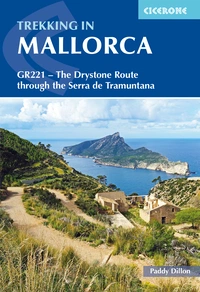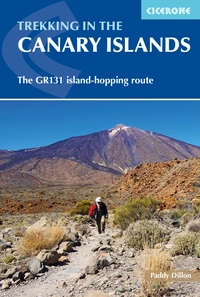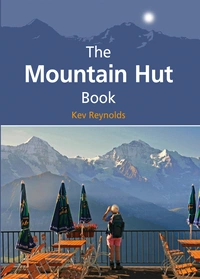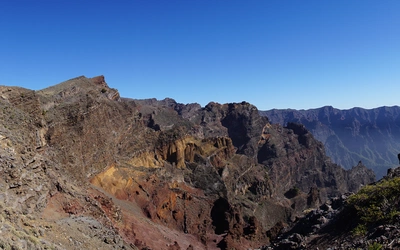Walking the GR221 through Mallorca’s Tramuntana mountains
Keen for a hike before winter, Joakim Steinsvåg spent a week under blue skies hiking the GR221 through Mallorca’s Tramuntana range.
After the huge disappointment of having to cancel my summer hike on the GR5, as autumn approached I was desperate for a long-distance hike before winter settled on Europe. But where to go? I spent most of September checking weather forecasts in Scania (Southern Sweden) and Alsace, hoping for blue skies, autumn leaves and hearty food. But it didn’t look very promising. Come early October it was time to check in with reality: if I wanted blue skies, I would have to go south. It would have to be the Spanish GR221, Ruta de Pedra en Sec, through the mountains of Mallorca’s Tramuntana range. Not a bad choice, it turned out.
Not that I expected it to be. It had long been on my wish list and with Paddy Dillon’s guide, Trekking in Mallorca, everything was in place for a good one-week hike through limestone mountains and rosemary.
Trekking in Mallorca
GR221 - The Drystone Route through the Serra de Tramuntana
£18.95
Guidebook to walking the GR221 Drystone Route (Ruta de Pedra en Sec) traversing Mallorca's Serra de Tramuntana between Pollença and Andratx. Following rock, paved paths and mule tracks between welcoming villages, the 140km (87 mile) trek is in 10 day stages and showcases the island's forests, mountains and drystone structures.
More informationThe first day started out with rain. I had just started the climb out of Port D’Antrax when the first droplets fell. But it was only a drizzle and the forecast promised beautiful weather for the rest of the week. A few hours later, as I approached the first village of Sant Elm, the rain clouds had left and beauty had arrived and it stayed with me for the rest of my hike.
In the Tramuntana range the villages are well known for their beauty. They have attracted artist, writers and other notabilities ever since Chopin and George Sand spent a freezing winter in Valldemossa in the 1830s. Tramuntana is also the name of the chilling northerly winds that sweep through these mountains in the winter. A fact Chopin and Sand might not have been aware of when deciding on Valldemossa as their winter retreat.
The village of Deià
After World War II the British writer Robert Graves settled in what is now perhaps Mallorca’s most famous village, Deià. Back then Deià was a farming village growing olives and almonds. Gradually, the agrarian community turned into an artists’ colony; a cosmopolitan haven for bohemians. Wealthy foreigners have since taken over many of its houses. This gradual change has been described in the novel Wild Olives by Robert Graves’ son, William. The change has of course come with a price, both for the locals and later for the pioneering foreigners making Deià their second home. Living expenses have increased and the attractions of the Tramuntana villages are no longer a secret kept within the creative classes. Today, tourists flood the streets of Deià, Valldemossa and Sóller.
And that was exactly what they did this day in October. So after a quick lunch at a random restaurant I was on my way. However, as is the case in many a quaint small town, most of the tourists are there only for a quick midday peek. But as a hiker you usually enter the streets of a new village just as the last tourist bus is on its way back to Costa something.
Arriving in picturesque Valldemossa the previous night, as the sun was descending towards the limestone ridges, and having dinner with a view of the lower part of town as the surrounding hills were glowing in the light from the last sunrays, was therefore every bit as satisfying as you could hope for.
Migrant birds
As I was doing the GR221 in October, the forests were alive with migrant birds from Northern Europe. One species was more numerous than any other. The robin. I have never seen so many robins in such a short amount of time. Every tree and every bush seemed to have its own robin paying a winter visit. In the evergreen Holm Oak woodlands, flocks of mistle thrush were rattling by overhead and on the highest part of the trail, climbing towards the Coll de Prat at 1220m, even a couple of ring ouzels had found a heathery patch to suit them.
But for a birder like me, the ornithological highlight was the black vulture. These huge birds of prey are found only in a few places in Europe, mainly in Spain. They have been driven to extinction on other Mediterranean islands, but a breeding program and strict protection measures stopped this from happening on Mallorca. Ever since their comeback their stronghold has been the northern part of the Serra, north of Sóller, where they breed mostly in pines growing on coastal cliffs. However, they have also returned to the mountains south of Sóller. Already on my first day on the GR, several of them were posing on ridges along the trail. The black vulture is the only vulture on the island and unmistakable because of its size.
The GR221 is still developing. Not all of the stages have been waymarked, mostly because of resistance from landowners. Like the part crossing Mola de Son Pacs, between Esporles and Valldemossa. As well as a lack of waymarking, this part of the trail also lacks an obvious path in places. Only very discrete stone cairns lead the way. Paddy Dillon’s instructions, as well as the map, have to be read and followed carefully on this stretch. But it’s worth the effort. After a slow start navigating meticulously up a stony slope, soon the path becomes clearer and later starts climbing the ridge sa Comuna, peaking at 704m. Although this whole area is forested, there are great views to be had just a couple of metres off-track. From Mola de Son Pacs you look down on the coast and cultivated fields.
From sa Comuna, Palma and the whole central plain of Mallorca can be seen in the distance.
The Drystone Route takes you up and down hills and mountains and in and out of charming villages through the length of the Serra de Tramuntana. It can be hiked in a week. In the not so distant future it will also connect to the developing GR222, crossing the plains of Pla de Mallorca on its way to the low mountains of the Serra de Llevant. So for my next trip to Mallorca I will probably need two weeks.












